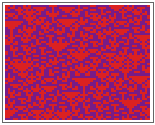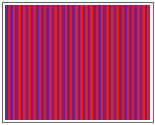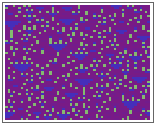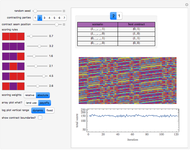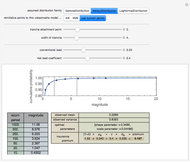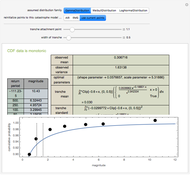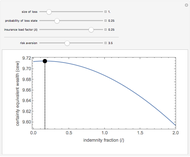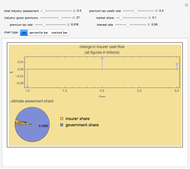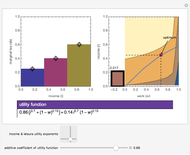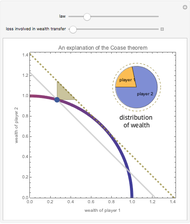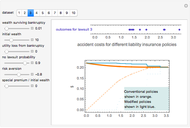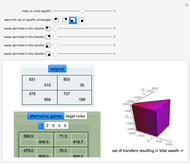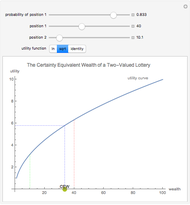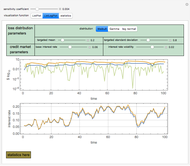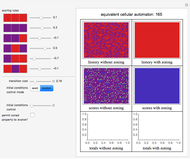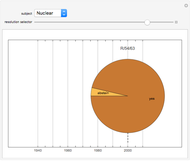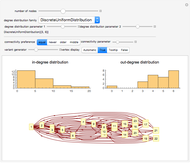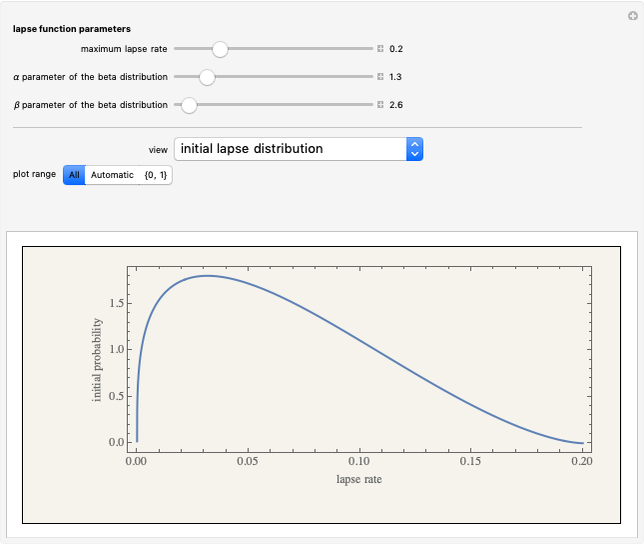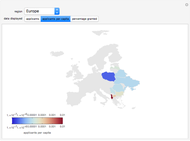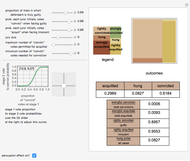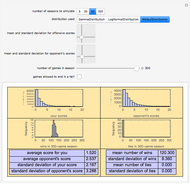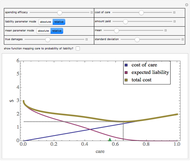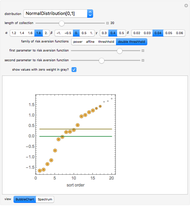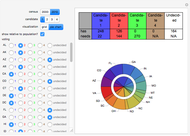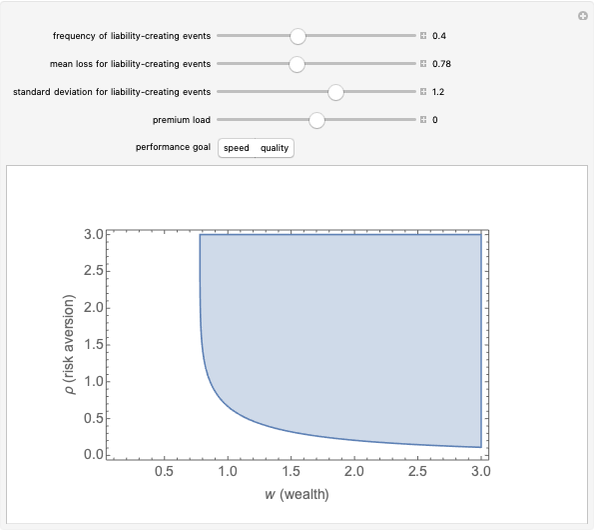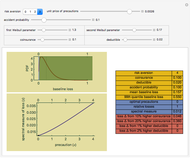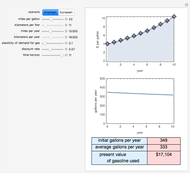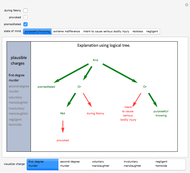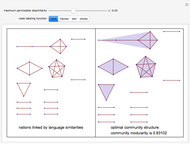Emulating Land Use Evolution with a Cellular Automaton

Requires a Wolfram Notebook System
Interact on desktop, mobile and cloud with the free Wolfram Player or other Wolfram Language products.
Consider an evolving abstract one-dimensional world in which each landowner has two neighboring landowners. During each discrete period of time, each landowner can use its land in one of two ways (blue or red, corresponding to 0 and 1). And during each period of time, the landowner receives a score depending on the combination of the landowner's choice of how to use its land and its nearest neighbors' choices of how to use their land. It might, for example, be best if a blue use were surrounded by one red use and be worst if a red use were surrounded by two blue uses. If the landowner changes the way it uses its land from the immediately prior iteration, it also incurs a "transition cost", which is subtracted from that score. Landowners then simultaneously "optimize" in a somewhat shortsighted fashion. They decide on their next turn to choose the use of land which, with transition costs taken into account, will yield them the highest score, assuming their neighbors keep their behavior the same.
[more]
Contributed by: Seth J. Chandler (April 2009)
Open content licensed under CC BY-NC-SA
Snapshots
Details
Snapshot 1: the existence of transition costs results in rapid evolution to a fixed configuration that is inferior to a zoned configuration
Snapshot 2: zoning does not always result in persistently higher scores where landowners are not forced to stick with the behavior initially specified by zoning
Snapshot 3: an example in which zoning results in persistently higher scores even where landowners are not forced to stick with the behavior initially specified by zoning
Snapshot 4: a set of scoring rules and a transition cost that result in a system emulated by Rule 90
Snapshot 5: the same rules as in the fourth snapshot but in which the system starts from a simple seed configuration
Although there are 64 outer totalistic rules (with two colors and of radius one), some experimentation suggests that if transition costs are set to zero, it only takes about 15 cellular automaton rules to emulate all the evolutionary paths created by an infinite space of possible payoff weight sets. Positive transition costs expand the set of and alter the distribution of possible emulating cellular automaton rules. With transition costs set to 0.2, a random sampling of 10,000 weight sets found 21 different emulating cellular automaton rules. With transition costs set to 0.7, experimentation found 27 different emulating cellular automaton rules.
This model could be made more elaborate by having the scores depend not only on the pattern of local land use but on global features such as the global frequency of each form of landowner behavior. It could be made yet more sophisticated by giving the landowners some intelligence and letting them condition their future behavior on their observations of their neighbors' evolving behavior. This addition would require use of higher-order cellular automata to emulate the evolution of the system.
The world modeled in this Demonstration is one-dimensional as a matter of simplicity and because it is conjectured that adding additional dimensions to the model or a topology to the model, though it would make matters more "realistic", would likely not alter the qualitative sorts of results shown here, would make presentation more complex, and would make interaction with the controls more sluggish.
S. Chandler, "Modeling Law: Using Cellular Automata to Study Legal Regulations of Conflicting Land Use," in Innovation in Mathematics, Proceedings of Second International Mathematics Symposium (V. Keränen, P. Mitic, and A. Hietamäki, eds.), Southampton: Computational Mechanics Publications, 1997 pp. 73-82.
Permanent Citation
"Emulating Land Use Evolution with a Cellular Automaton"
http://demonstrations.wolfram.com/EmulatingLandUseEvolutionWithACellularAutomaton/
Wolfram Demonstrations Project
Published: April 27 2009






